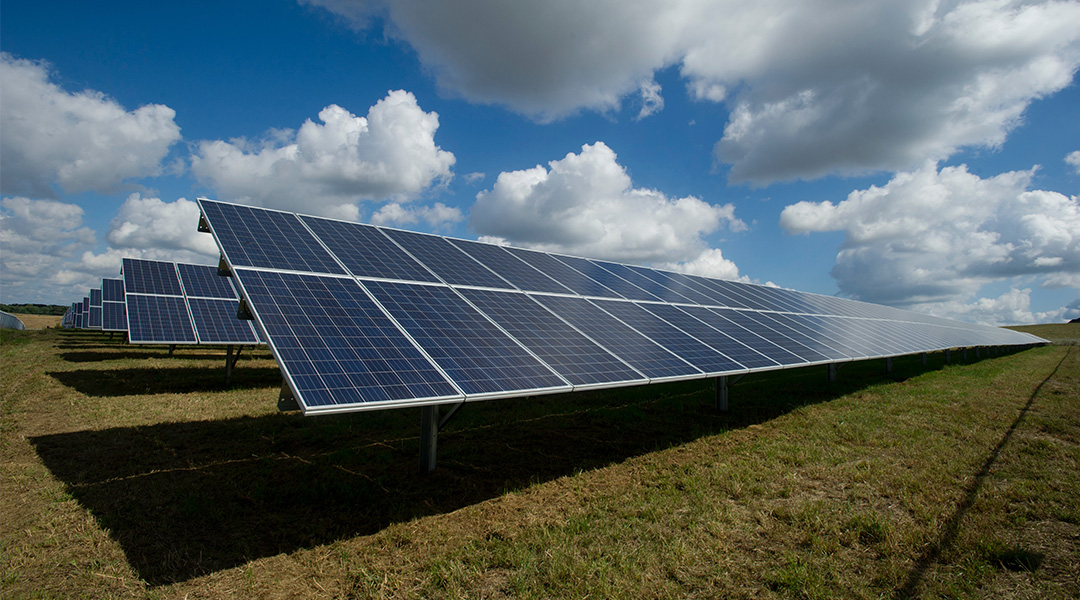The urgency to de-fossilize society is clearly understood and the energy transition is ongoing. Materials play a critical role, particularly in energy production, distribution, storage and use, and novel materials are key enablers to sustainable solutions for a wide range of renewable technologies.
New challenges such as resource availability, supply chain security as emphasized by recent pandemics and geopolitical crises, have constrained the regional ability and capacity to rapidly find new materials solutions. The likelihood of achieving a comprehensive and rapid conversion from a fossil-fuel-driven society to renewables, green and circular technologies depend significantly on our collective ability to develop a wide spectrum of novel materials and devices to achieve that goal.
Given the need for a rapid transition to a low carbon economy under the European Green Deal and the UN Framework Convention on Climate Change, as well as the need to make resource extraction and the industrial complex resilient and sustainable in accord with the UN Sustainable Development Goals, novel materials must be discovered and developed at an unprecedented rate.
This will only be possible through a concerted green and digital transformation. Building on sophisticated robotic automation, high performance computing for advanced multiscale simulation and modeling, and the revolution in artificial intelligence and digital technology, a novel approach to fulfil this demand was conceived, known as Materials Acceleration Platforms, (MAPs). Their importance for clean energy materials was identified in 2018 within Mission Innovation, as a call to action to address climate change under the Paris Accord.
What is a MAP?
MAPs are self-driving or autonomous materials laboratories. The MAP concept couples robotically executed high-throughput materials synthesis and characterization in a closed loop that is accelerated by AI-driven experimental planning, data analytics, and advanced simulation techniques to realize materials and device development at least 10 times faster than conventional science methods and at a fraction of the cost.
The building blocks of a MAP include a research community and its domain knowledge that nurtures and steers the MAP, provides feedback, and leverages the knowledge generated at an accelerated rate. So, as an entire ecosystem, a MAP goes far beyond its technical components and represents a novel method of scientific research.
In materials science, this automation of closed-looped research has only recently begun to accelerate discoveries. In addition, AI-enhancement of experimental planning, simulation and modelling is beginning to allow for unique approaches such as inverse design of novel materials and materials systems. Nevertheless, there are already several success stories of individual projects that apply MAP concepts consistently, particularly in the research of new batteries (BIG-MAP), and photovoltaics (Project Ada, AMANDA).
As an example, AMANDA, an automated photovoltaic (PV) cell production and testing line, can now produce hundreds of samples per day adapting the mixture of ingredients and process parameters in each run. It has led to extraordinary discoveries in organic photovoltaics regarding predictability of key performance indicators and autonomous optimization. AMANDA is already being repurposed to accelerate development of solar PV perovskites (See these two manuscripts for examples), e.g for the identification of ultrastable perovskite compositions.
Impact
A society that succeeds first in fully implementing the vision of a MAP will be able to stand out significantly in international competition. The MAP robotic system makes research results particularly reliable, reproducible and transferable, so that research communities can easily collaborate to address problems of a global scale.
From the industry perspective, MAPs enable industry to respond much faster and more flexibly to application requirements. Instead of focusing only on materials properties in early-stage development, strategic considerations such as techno-economics, sustainability and manufacturing are already taken into account.
By focusing on device manufacturability instead of pure material synthesizability, MAPs will reduce capital expenditures , time-to-market, and commercialization risk for new materials. Finally, MAPs transform open innovation into societal impact by serving as a central platform that brings together economic, regulatory, social, and political aspects in a community enabling the successful rollout of disruptive and sustainable innovation in materials and devices.
Gaps and recommendations
While the initial implementations of MAPs clearly demonstrate the potential, they also reveal the hurdles that still prevent widespread establishment across the research community and the steps that need to be taken to overcome them, both on the political/organizational and technical level.
Time is overdue for a revolutionary shift in materials science from the conventional trial-and-error, bench-top approach on very specific problems with many separate and manual processes to facilities with automation and shared data spaces that couple the physical hardware to close the loop on accelerated materials discovery.
In order for MAPs to be quickly adapted, implemented, and used by industry, long-term funding concepts should be developed so that digital methods for materials research can be standardized and further developed at the same time as providing value-added, materials solutions to industry. In addition, this new methodology must be incorporated into the training concepts of scientists.
Funding should also de-risk infrastructure access for industry, especially small and medium enterprises and startups to enable the transfer of the technology concepts of the MAP community into industry in order to achieve a broad and fast-track adoption.
A policy paper that elaborates on the framework for implementation, as well as detailed technical guidance for actual deployment through existing and future research initiatives is currently in development, to inform global policy makers and science organizations of the critical importance of accelerated materials discovery and help scientists and engineers with the concrete implementation.
This article is the result of a series of joint workshops with contributions from Simon Stier, Christoph Kreisbeck, Holger Ihssen, Matthias Albert Popp, Jens Hauch, Kourosh Malek, Marine Reynaud, Fedor Goumans, Johan Carlsson, Ilian Todorov, Lukas Gold, Andreas Räder, Wolfgang Wenzel, Shahbaz Tareq Bandesha, Philippe Jacques, Francisco Garcia-Moreno, Oier Arcelus, Pascal Friederich, Simon Clark, Mario Maglione, Anssi Laukkanen, Ivano Eligio Castelli, Montserrat Casas Cabanas, Javier Carrasco, Helge Sören Stein, Tejs Vegge, Sawako Nakamae, Monica Fabrizio, Mark Kozdras
A related preprint can be found here

















